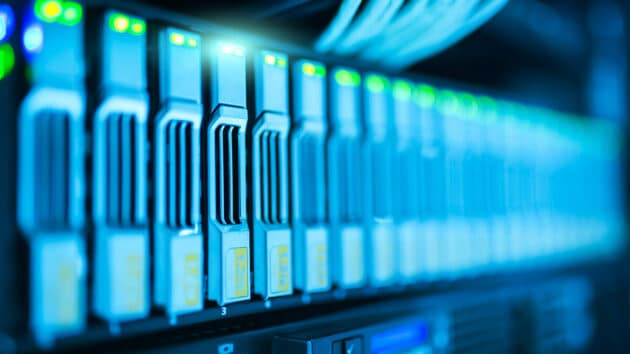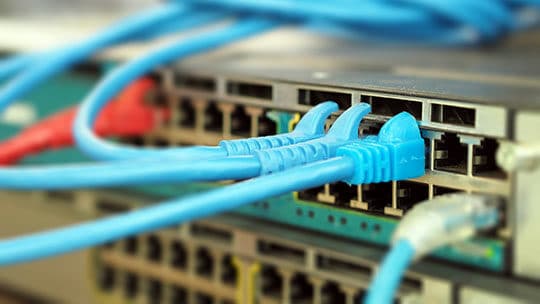Before subscribing to a new internet plan, it is best to understand the different types of internet that are available in the market today. However, before making the big purchase, let’s go basic first.
Defining Broadband

This is a broad term, which is used to refer to the different kinds of internet connections that are available in the U.S, among which DSL internet, cable internet, satellite, and fiber optic internet service are considered the popular options.
For a connection to be labeled as broadband, it must meet certain criteria as specified by the Federal Communications Commission (FCC) in the United States (which differs from country to country). With tech advancements taking place at a blazing-fast speed in the industry, the FCC periodically updates the criterion, so that the respective target audience is always in the loop with the latest tech updates.
Although most people are aware of these terms, their knowledge is mostly generic. That’s why it’s important to be specific with the terminologies before one decides to purchase a new internet connection. What makes this ultra-useful is that one is aware when they are ready to make an upgrade to their present internet service.
Like, move from a cable-based ISP to a fiber optic-based one. Or maybe get hold of one of the terrific Hawaiian Telcom bundles after their relocation to the island state for work.
This clarity in comprehension helps target consumers make an informed yet practical final decision. Hence it is necessary to understand the various ways each broadband service is different from each other and what are the various pros and cons associated with each service kind.
Read on to find out the details about each one of them.
Recommended for you: Top 5 Web Development Technologies in Spotlight in 2022-2023.
Understanding DSL Internet Service

DSL or digital subscriber line is an internet type that utilizes active telephone cables for data transfer.
These copper lines hold immense potential and can handle far more bandwidth than what is required for audio or voice. Hence data transfer takes place at a higher frequency than what is usually required for voice.
This is why your home phone, and the internet can function at the same time if you have a DSL connection set up at home.
Is this similar to Dial-up?
However, it is important to note that it does not have anything in common with a dial-up connection, which is now deemed by industry experts as ‘obsolete tech’. And interestingly, by consumers too!
That’s because this kind of internet service soon took a back seat when other types of internet that were much faster in comparison, such as cable or fiber internet took the lead. DSL internet offers asymmetric speeds – which means that both upload and download speeds are different and download speeds are expected to be on the higher side.
For instance, the download speed might be 35 Mbps while the upload speed is expected to be some 10 Mbps max.
DSL & its pros
One of the many advantages of DSL internet is that since data transfers take place over a reserved wireline, your neighbor might not be able to hog up your bandwidth as in the case of other internet kinds.
Furthermore, with telephone lines being used for DSL internet, it is easily available in most parts of the country. This means better telephone coverage and better internet! But the good parts don’t just end here.
When it comes to DSL internet plans and discounts, many reputed ISPs such as CenturyLink, AT&T, and Windstream among multiple others, offer DSL-based internet connections to their target audiences. DSL internet is ideal for new startups and small households or basic internet usage.
For instance, if a user has a smart house that requires a speedier service, then DSL is not for you. But if the daily internet consumption includes basic web surfing, checking work emails, and social media browsing, then DSL internet is fast enough and can get things done within no time.
Understanding Cable Internet Service

Similar to DSL, cable internet too also transfers internet data via a wired framework. However, instead of using copper-based phone lines, cable internet utilizes coaxial cables that were primarily used for cable TV transmission.
Since these cables are said to carry more bandwidth, users get speeds higher than the ones offered by DSL service. More so, cable internet is utilized by well-known ISPs such as Cox Communications, Spectrum, Grande Communications, Mediacom, and Wave among several others in the U.S.
On top of that, many cable internet providers today are in the process of upgrading their existing infrastructure. They aim to employ fiber optic wirelines for short-distance data travels initially, and expand it to longer distances eventually.
For them, it is the last mile, which means that ‘data hops over the coaxial cable wire lines before finally reaching the consumer’s location. It is important to mention that this is one of the innovations which could not have been possible without the latest internet-based protocols like DOCSIS 3.0 & 3.1.
With fiber in the picture, cable ISPs are now able to produce a far more robust connection that’s much more popular than other kinds of internet. The use of both cable and fiber optic cables gives birth to a connection type called hybrid-fiber-coaxial internet.
Cable internet providers deliver high download speeds, which are quite impressive. However, upload speeds are not as high as fiber internet.
For instance, the download speed could be 1 Gbps while the upload speed of cable broadband falls below 50 Mbps and doesn’t exceed much. However, unlike DSL internet, the wireline is not dedicated to the consumer alone. Therefore, the bandwidth is often shared between people residing in the same area. Thus, giving a slower service connection that often varies because many people are connected to the same cable-based ISP within the same area probably under the same time frame.
Why is Cable Internet so popular?
With the wide availability of coaxial framework in most urban and suburban centers, cable providers will simply find ‘fiber to the X’ boosting their service. Areas, where fiber ISPs are not yet present, would still provision slower speeds.
Regardless, cable continues to be one of the popular types of broadband internet available in the U.S.
While many cable internet providers offer a wide range of speed tiers, some propose unlimited data while many others come with a cap option every time data hits the overage limit. Nonetheless, the question remains: is cable internet the right kind of internet for your home? What makes it a right fit for the average internet consumer, residential and otherwise?
It ultimately depends on the needs and requirements of the user(s). If a household or an enterprise requires heavy online activity and requires several devices to be connected to the same network, then cable internet is right for them. Since it offers different speed tiers, all kinds of users can connect to the network no matter how much their internet consumption is.
Whether streaming or gameplay, this kind of ISP would be perfect for them.
However, users cannot always rely on the reliability of this internet type, especially at peak times as service bandwidth is unknowingly shared. It is important to note that upload speeds in cable internet are relatively lesser than their download counterpart, while still being higher than DSL.
Even though many cable providers can dispense internet speeds similar to fiber, they are not as good as a pure fiber internet service would be. Nonetheless, the high speed and convenience of cable internet make it a winner, which is why it is still prevalent across the U.S.
You may like: 9 Stunning Ways Technology Can Transform Wholesale Distribution.
Understanding Fiber Optic Internet

Fiber optics transformed the broadband industry because it introduced faster speed tiers, better service, and an overall enhanced connection.
Considerably quicker than either DSL or cable, fiber optic cables utilize glass and ensure that data transmission takes place at lightning speed, which means that large amounts of data can passage in a jiffy! Moreover, a fiber-based internet connection doesn’t only give you a reliable service but symmetrical speeds for both downloads and uploads.
The good thing about fiber optic is that speed is never an issue so heavy-duty tasks like streaming Netflix and similar OTT platforms, high-speed gameplays, and even downloading multiple heavy files at the same time can be achieved without any hassle. Users can easily connect several devices to a fiber optic internet at once and the internet will not hiccup.
Does Fiber have any cons?
While the network coverage of fiber internet is limited, nothing beats the reliability feature of this type of internet connection. It’s the insufficient availability that continues to be an issue.
Unfortunately, fiber optic internet is still only available in certain parts of the country, due to which many providers now offer a hybrid connection in which cable internet hops over the lines of fiber optic in the last mile. Thus, providing some parts of fiber optic, if not all. When it comes to discount plans, fiber internet is rather costly.
But many providers now facilitate users with an affordable service. The price of Hawaiian Tel internet is $39.99 per month and comes with download speeds that soar as high as 1 GIG in the region! Nonetheless, there are other fiber-based providers like CenturyLink Fiber, AT&T Fiber, Windstream Kinetic, or spectrum that offer similar reasonably-priced plans. But you can also read out the blog to know if Hawaiian Tel is better than Spectrum. It all depends on your requirements, but better to know before making any purchase
Even though the monthly prices and speed tiers under fiber optic internet may vary, the question does pop: is fiber optic right for you?
With fiber optic, one thing is confirmed the average consumer would never have to worry about bandwidth-related issues. This is a major reason why fiber broadband is considered ideal for both commercial and residential usage. The best part is that even if lower speed tiers are available, the quality of connection would never be lowered.
Hence, you can enjoy a top-notch bandwidth without breaking the bank!
Which types of the internet should you choose? DSL, Cable, or Fiber?

Once each type of internet is clear, it is time to compare one with the other. Analyzing several factors is the only way to understand each internet type and what would work best for you:
Connection speeds & price range
Out of the three of them, fiber is the fastest while cable internet is second-best, followed by DSL, which has comparatively slow to moderate connection speeds. When it comes to price range, DSL and cable are quite easy on the budget while fiber is comparatively costly.
Service performance
Fiber is thoroughly consistent service and is known for its high-reliability factor. While cable occasionally experiences a glitch, users may suffer at peak time, especially if the bandwidth is shared.
Lastly, DSL becomes significantly consistent if users can get a dedicated connection.
Availability & Accessibility
While DSL is still widely accessible because of its massive availability as a landline connection that falls over a copper-based network, the cable is also extensively available due to the coaxial cable TV networks that are available far and wide.
Unfortunately, a pure fiber internet connection is quite restricted and accessible to select regions only.
You may also like: Top 15 Software Technology Trends of Today.
Wrapping up

So, there you go! Although the differences between the different types of internet are undeniable, the final choice ultimately depends on a user’s individual preferences. Hence, before selecting a broadband service, always keep these factors in mind. Opt for a service provider that doesn’t only offer high speeds with a decent package but one, that’s also easily available at your address.





